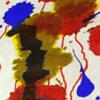International Klein Blue: The Most Perfect Expression Of Blue
-
Forum Statistics
355.1k
Total Topics4.6m
Total Posts -
Member Statistics
128,183
Total Members18,857
Most OnlineNewest Member
Felocrat
Joined -
Images
-
Albums
-
1 -January-Feb 2025 reviews
- By yazeh,
- 0
- 0
- 99
-
OCArt #2
- By OCArt,
- 0
- 2
- 33
-
USG 8
- By USG,
- 0
- 0
- 23
-
2023-02 amberleadavis
- By amberleadavis,
- 0
- 0
- 37
-
2022 amberleadavis 8
- By amberleadavis,
- 0
- 0
- 90
-


















.thumb.jpg.f07fa8de82f3c2bce9737ae64fbca314.jpg)



.thumb.jpg.331e554113c33fb39d5bf3233878978a.jpg)





Recommended Posts
Create an account or sign in to comment
You need to be a member in order to leave a comment
Create an account
Sign up for a new account in our community. It's easy!
Register a new accountSign in
Already have an account? Sign in here.
Sign In Now